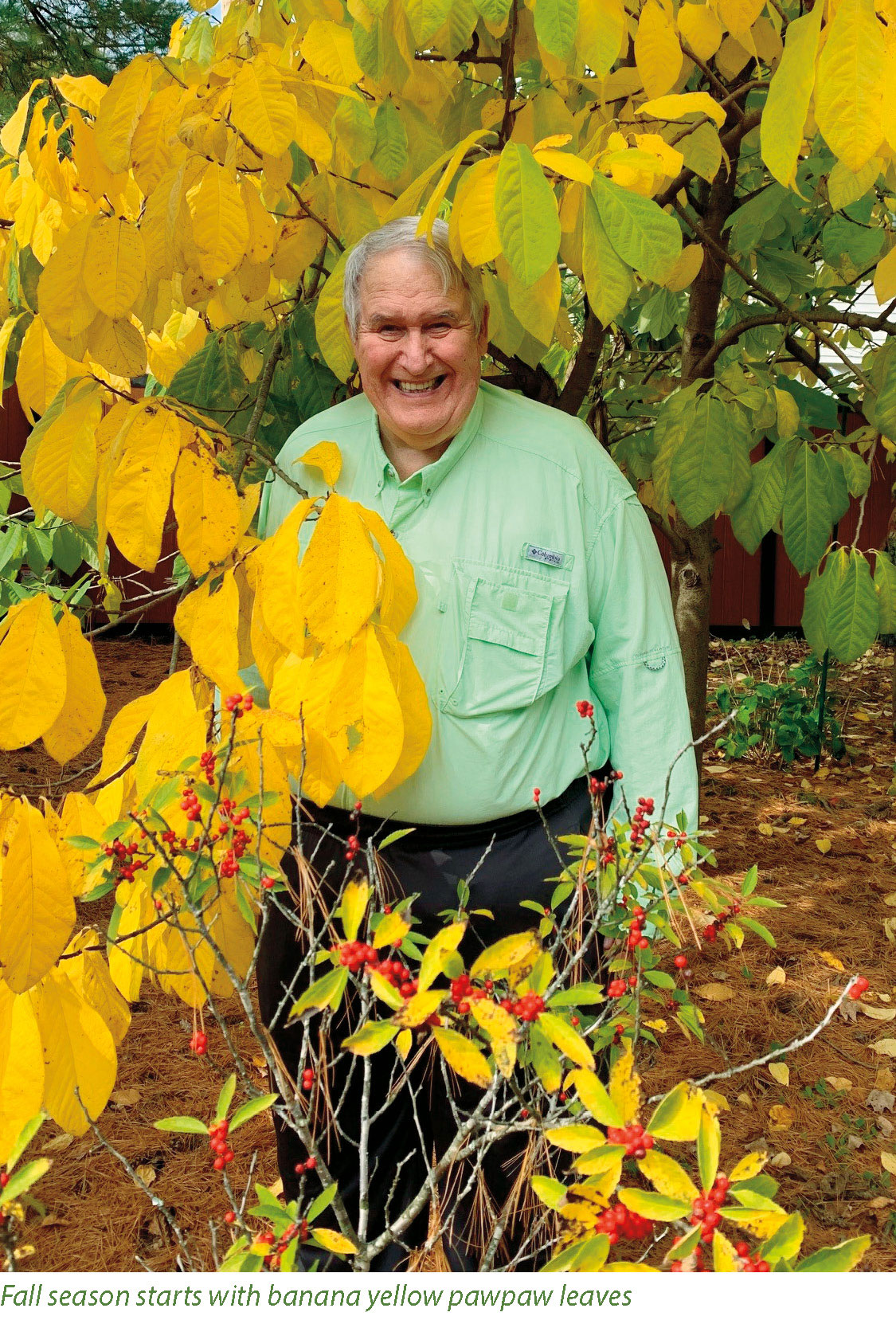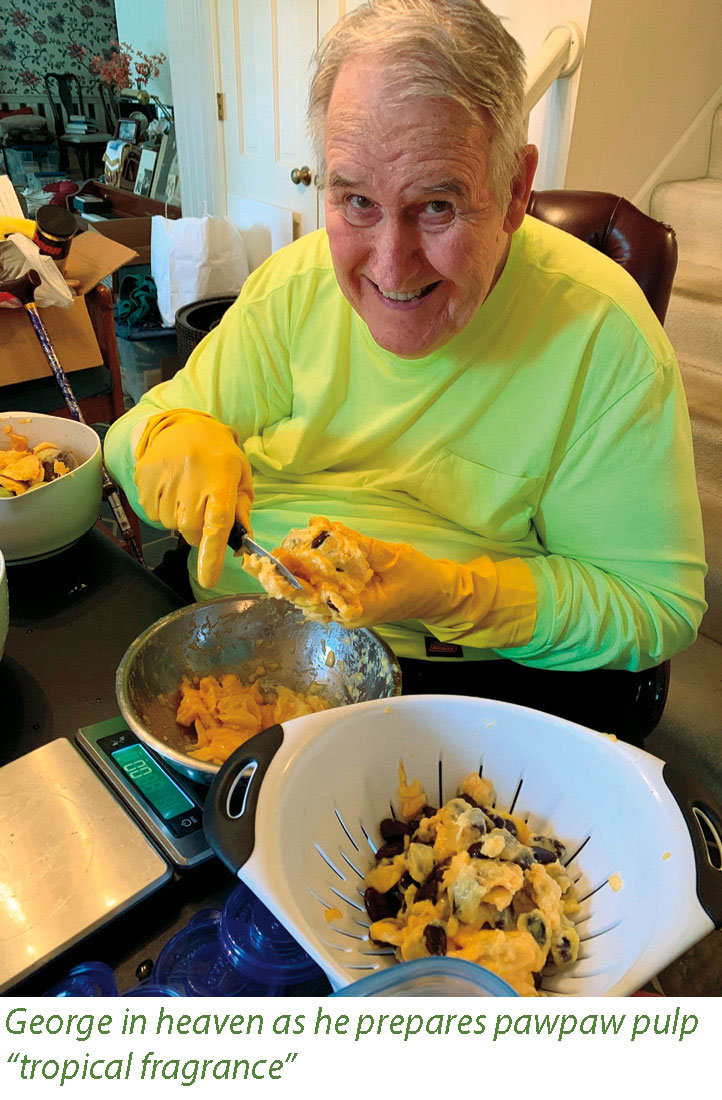Pawpaws: Winding Road to Pawpaw Heaven
I have always been interested in forestry and had pawpaw trees in the understudy of my forest. But my first real introduction to pawpaws came when I read an article in a forestry publication looking for volunteers to collect emerging pawpaw leaves from wild native stands. Kentucky State University was studying the effects of various pawpaws in cancer research. This sounded like a worthwhile project. I gathered samples from my forest, as well as from people I knew in southern Illinois, southern Indiana and central Ohio. At my own expense I shipped the samples in coolers to Dr. Kirk Pomper at Kentucky State.
Becoming acquainted with Dr. Pomper and his team led me to better understanding of pawpaws. Through him I became acquainted with Chris Chmiel of Integration Acres, founder of the Ohio Pawpaw Festival.
My wife and I attended the 1st Ohio Pawpaw Festival. I was fortunate to win one of the cooking contest prizes with my pawpaw bread. That got me hooked and I have attended most of the festivals since, entering the cooking contests with winning pawpaw smoothie, pawpaw tres leches cake and pawpaw crème brulee to name a few.
My interest in pawpaws grew, and I attended a Kentucky State University field day and seminar. Kentucky State is the leader in pawpaw research, and I ultimately attended several of their seminars, which were well attended, including international nursery representatives. At the first seminar I attended I met Neal Peterson of Peterson Pawpaws. Neal selected pawpaws with favorable characteristics and bred them to produce new varieties with excellent taste and size compared to most native varieties. At the time I gave him his largest order: 40 grafted seedlings in Shenandoah, Susquehanna and Rappahannock varieties. Ten were planted at my Columbus, Ohio back yard and the rest at my Indiana farm. The Indiana trees were planted in the understory of my walnut plantation since it is by nature an understory tree. When the second weekend of September rolled around, I had fruit from both places to enter in the Ohio Pawpaw Festival contest for “Best Pawpaw”, where pawpaws are judged on nine characteristics. Over the years I have won various prizes with my pawpaws, including “Biggest Pawpaw” in 2009. It was 17 ounces, compared to the average in the wild of 6 ounces. Winning has been fun and encouraged me to keep going with this hobby.
In the fall of 2015 we planted forty grafted Peterson Pawpaws, obtained from the Forrest Keeling nursery north of St. Louis, Missouri. They are mostly Wabash and Shenandoah varieties. Although pawpaws tend to be an understory tree, when planted in the sun, such as my plantation, they grow faster. I installed a drip irrigation system with a timer. This year we upgraded to a wi-fi capable timer so we can adjust the watering whenever we want from wherever we are. We also hand fertilize each tree a couple of times a year.
Pawpaws have led to new friendships. I reconnected with an Indiana friend from 4-H days, Mark Hildebrand, who is another pawpaw enthusiast. He helped plant my pawpaw plantation, took fruit entries to the Festival when I could not attend, and grafted some trees for me.
In 2019, we won second place “Best Pawpaw” with a Wabash from the plantation, among the first fruit to have from those trees. Last year’s “Best Pawpaw” came from a NC-1 variety tree in the plantation. The NC-1 variety was developed in 1976 in Canada by crossing two other varieties. We had fruit from such young trees because they are grafted. Grafted seedlings have a big advantage of yielding quicker results. Quite a number of nurseries now have improved grafted seedlings available. In a few years when the plantation produces larger volumes of fruit, I hope to connect with a winery or brewery to sell my fruit as pawpaw contributes to excellent wine and beer.
As mentioned at the beginning of this article, I started out wanting to help someone else. In the end, I have an interesting hobby. Pawpaw is now Ohio’s official native tree. For years, most people I talked to had never heard of pawpaws, but now I am running into more people that are aware. The Ohio Pawpaw Festival in September is always a great family-fun event near Albany and Athens, Ohio. Some people call me Pawpaw King or Pawpaw Man since I have won so many prizes. I have a wall full of plaques I have received.
An interesting fact: if you find yourself in the forest without insect spray, crunch up pawpaw leaves and rub them on your skin. It may smell like diesel, but it should keep the insects away.
This winding road to pawpaw heaven has been very interesting and rewarding. By meeting researchers, nursery people and fellow enthusiasts that love the pawpaw, I have found a satisfying pastime. From harvesting in early fall to freezing the pulp to make treats later, flavors and friends make a pawpaw heaven.
